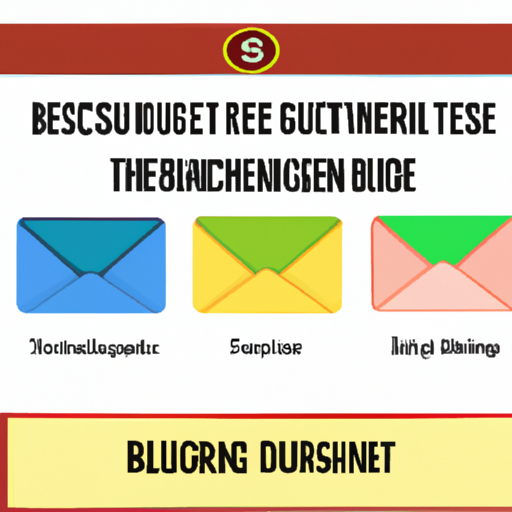Have you ever struggled to keep track of your expenses and save money? If so, you may want to consider trying the envelope budgeting method. This popular budgeting technique involves allocating your money into different physical envelopes for various spending categories, such as groceries, entertainment, and bills. By visually seeing how much money you have left in each envelope, you can better manage your finances and avoid overspending. But is this method truly effective? In this article, we will explore the ins and outs of the envelope budgeting method, its benefits, and whether it can help you achieve your financial goals.

Check out our Recommend Products
What is the Envelope Budgeting Method
Explanation of the envelope budgeting method
The envelope budgeting method is a practical and straightforward approach to managing your finances. It involves categorizing your expenses and allocating a specific amount of money to each category. The allocated funds are then placed in separate envelopes, representing each expense category. By physically separating your money into envelopes, you have a visual representation of your budget and can easily track your expenses. This method helps you prioritize your spending, avoid overspending, and stay in control of your finances.
Origins and history of the envelope budgeting method
The envelope budgeting method has been around for decades and has its roots in the cash-based system of budgeting. It gained popularity in the 1920s when budgeting became a common practice. Before the era of digital banking and credit cards, people used cash to make most of their purchases and manage their budget. Budgeting envelopes were a practical way to allocate money for different expenses, making it easier to account for every dollar spent.
How Does the Envelope Budgeting Method Work
Step-by-step guide to the envelope budgeting method
- Setting up the budgeting envelopes: Start by determining the expense categories that are relevant to your financial situation. Common categories include groceries, transportation, utilities, entertainment, and savings. Label each envelope with a category name.
- Allocating funds to each envelope: Decide on the amount of money you want to allocate to each envelope. Consider your income, fixed expenses, and savings goals. Allocate a realistic and manageable amount for each category. Place the allocated cash in their respective envelopes.
- Using the envelopes for spending: When making purchases, use the designated envelope’s cash for that particular expense category. For example, when buying groceries, use the funds from the grocery envelope. This way, you are conscious of your spending and can visually see how much money is left for that category.
- Tracking expenses and adjusting the envelopes: Keep track of your expenses by recording them in a notebook or using budgeting apps. When an envelope is empty, it’s a signal that you have exhausted your funds for that particular category. Review your expenses regularly, adjust the amount allocated to each envelope if needed, and make any necessary changes to your budget.
Setting up the budgeting envelopes
When setting up your budgeting envelopes, it’s important to consider your individual financial needs and goals. Identify the expense categories that are most relevant to your lifestyle and ensure that you have an envelope for each. Common expense categories include groceries, housing, transportation, utilities, entertainment, and debt payments. Label each envelope with the category name to easily identify and track your spending.
Allocating funds to each envelope
Determine how much money you want to allocate to each expense category based on your income and financial priorities. Consider your fixed expenses, such as rent or mortgage payments, utilities, and debt payments. Aim to allocate enough funds to cover these fixed expenses and prioritize savings goals. Be realistic with your allocations to ensure that you can comfortably meet all your financial obligations.
Using the envelopes for spending
When it’s time to make a purchase, refer to the appropriate envelope for that expense category. For example, if you are going grocery shopping, reach into your grocery envelope to pay for the groceries. By using cash from the designated envelope, you are more aware of your spending and can better track how much money is left for each category. This method encourages mindful spending and reduces the risk of overspending.
Tracking expenses and adjusting the envelopes
To effectively use the envelope budgeting method, it is essential to track your expenses. Maintain a separate notebook or use budgeting apps to record the amount spent from each envelope. This will help you stay accountable and aware of your spending habits. Regularly review your expenses and adjust the amount allocated to each envelope if necessary. If you consistently overspend in a particular category, you may need to reevaluate your budget and make adjustments accordingly.
Benefits of Using the Envelope Budgeting Method
Increased financial awareness and mindfulness
One of the primary benefits of the envelope budgeting method is its ability to increase your financial awareness and mindfulness. By physically handling cash and seeing the money allocated to each expense category, you become more conscious of your spending habits. This heightened awareness helps you make better financial decisions and avoid unnecessary purchases. It encourages you to think twice before spending money from a specific envelope, promoting a more mindful approach to managing your finances.
Better control over spending habits
The envelope budgeting method gives you better control over your spending habits. By allocating a set amount of cash to each expense category, you can clearly see how much money is available for a particular purpose. This visual representation of your budget helps you prioritize your spending and avoid impulsive purchases. It serves as a constant reminder to stick to your financial plan and prevents overspending.
Reduced impulse buying and overspending
With the envelope budgeting method, you are less likely to engage in impulse buying and overspending. When you have a limited amount of cash in a specific envelope, you are forced to prioritize your purchases and consider their importance. This method adds a layer of intentionality to your spending, reducing the tendency to make impulsive purchases. As a result, you save money by avoiding unnecessary expenses and staying within your budgetary constraints.
Simplified budgeting and expense tracking
Compared to complex spreadsheets or digital budgeting apps, the envelope budgeting method offers a simplified approach to budgeting and expense tracking. You don’t need to navigate through multiple screens or charts to understand your financial situation. Instead, you can quickly glance at your envelopes to see how much money you have left in each category. This simplicity makes budgeting more accessible and less overwhelming for individuals who prefer a tangible and straightforward method.
Potential Challenges of the Envelope Budgeting Method
Difficulties in handling cash transactions
One of the challenges of the envelope budgeting method is the increasing reliance on digital transactions. With the rise of online shopping and electronic payments, it can be challenging to handle cash for all your expenses. Some transactions may require a credit card or digital payment method, making it difficult to strictly adhere to the envelope system. However, you can still adapt the method by allocating digital funds to virtual envelopes or by using separate accounts for different expense categories.
Limited flexibility and adaptability
The envelope budgeting method may lack flexibility and adaptability for individuals with frequently changing or irregular income. If your income fluctuates significantly from month to month, it can be challenging to allocate fixed amounts of money to each envelope. In such cases, it may be necessary to be more flexible with your budget allocations or consider alternative budgeting methods that can accommodate irregular income.
Risk of misplacing or losing envelopes
When using physical envelopes to manage your budget, there is always the risk of misplacing or losing them. Accidentally misplacing an envelope with cash can disrupt your budgeting system and potentially lead to financial setbacks. It’s crucial to establish a safe and organized system for storing your budgeting envelopes, such as a designated drawer or secure container. Consider using transparent envelopes or labeling envelopes with your contact information to increase the chances of retrieval if lost.
Difficulty in budgeting irregular or variable income
Budgeting irregular or variable income can be challenging with the envelope budgeting method. As mentioned earlier, this method relies on allocating fixed amounts of cash to each envelope. However, if your income varies significantly from month to month, it can be difficult to determine how much money to allocate. In such cases, consider setting aside a percentage of your income for each expense category rather than fixed amounts. This approach allows for more flexibility and helps adapt to the fluctuations in your income.

Tips and Strategies for Successfully Implementing the Envelope Budgeting Method
Create a realistic budget based on income and expenses
When implementing the envelope budgeting method, it’s essential to create a realistic budget based on your income and expenses. Be honest with yourself about your financial situation and prioritize your spending accordingly. Consider your fixed expenses, savings goals, and discretionary spending. Remember, a budget is a tool to guide your financial decisions and should reflect your individual circumstances.
Use separate envelopes for different expense categories
To effectively track your spending, it’s crucial to use separate envelopes for each expense category. This separation allows for better organization and clarity in your budgeting process. By allocating funds to specific envelopes, you can easily identify where your money is going and make adjustments when necessary. Using colored or labeled envelopes can further enhance visibility and make the process more enjoyable.
Start with a small number of envelopes and gradually expand
If you are new to the envelope budgeting method, it’s encouraged to start with a small number of envelopes and gradually expand as you become comfortable with the process. Begin with essential expense categories and add more envelopes later based on your specific financial goals. Starting small allows you to familiarize yourself with the method and make adjustments as needed without feeling overwhelmed.
Consider using digital envelopes or apps for virtual budgeting
If handling physical envelopes is not practical for you, consider using digital envelopes or budgeting apps for virtual budgeting. Many budgeting apps offer features that simulate the envelope system by allowing you to allocate funds to virtual envelopes. This digital approach provides the convenience of modern technology while still capturing the essence of the envelope budgeting method.
Regularly review and adjust the budget envelopes
To ensure the envelope budgeting method remains effective, it’s important to regularly review and adjust the budget envelopes. Review your expenses, identify areas of overspending or underspending, and make any necessary adjustments to the amounts allocated to each envelope. Life circumstances and financial priorities may change over time, so it’s crucial to adapt your budget accordingly.
Involve all family members in the budgeting process
If you share finances with your family or partner, involving them in the budgeting process is essential. Communication and collaboration are key to successfully implementing the envelope budgeting method. Sit down together as a family and discuss financial goals, determine expense categories, and allocate funds to each envelope accordingly. By involving everyone, you create a sense of shared responsibility and increase the chances of sticking to the budget.
Comparison of Envelope Budgeting Method with Other Budgeting Techniques
Envelope budgeting vs. traditional spreadsheet budgeting
The envelope budgeting method differs from traditional spreadsheet budgeting in its approach and level of complexity. While traditional spreadsheet budgeting involves meticulously tracking and categorizing expenses using software or spreadsheets, the envelope method offers a simpler, tactile approach. Spreadsheet budgeting may provide more detailed analysis and data, but it can be time-consuming and overwhelming for individuals who prefer a more hands-on and visual method.
Envelope budgeting vs. digital budgeting apps
Digital budgeting apps offer convenience and accessibility, but they differ from the envelope budgeting method in terms of tangibility and physical representation. In digital budgeting apps, funds are allocated virtually to different expense categories rather than physically being placed in separate envelopes. While digital apps may provide real-time tracking and automation features, the envelope method offers a more tangible and mindful approach to budgeting.
Envelope budgeting vs. the 50/30/20 budgeting rule
The envelope budgeting method and the 50/30/20 budgeting rule have different approaches to budget allocation. The 50/30/20 rule suggests allocating 50% of your income to needs, 30% to wants, and 20% to savings. In contrast, the envelope method involves directly allocating funds to specific expense categories, such as groceries or rent. The envelope method provides a more detailed breakdown of expenses, while the 50/30/20 rule offers a broader guideline for budget allocation.
Envelope budgeting vs. zero-based budgeting
Envelope budgeting and zero-based budgeting share similar principles in terms of allocating all income to expenses. However, the key difference is in the approach. With zero-based budgeting, you allocate every dollar of income to different expense categories, saving, or debt payments. In the envelope method, you allocate fixed amounts to each envelope based on your financial priorities. Both methods aim to ensure that each dollar is accounted for, but the envelope method provides a more visual representation of the budget.

Success Stories of Envelope Budgeting Method Users
Personal experiences and testimonials from individuals
Many individuals have experienced considerable success using the envelope budgeting method. They have shared stories of taking control of their finances and achieving their financial goals through disciplined budgeting. These success stories highlight the effectiveness of the envelope method in promoting financial mindfulness, reducing debt, and increasing savings. From paying off student loans to saving for a dream vacation, the envelope budgeting method has proven to be a valuable tool in changing financial behaviors and achieving long-term goals.
Case studies of families or individuals who achieved financial goals
Case studies provide real-life examples of families or individuals who have successfully implemented the envelope budgeting method to achieve their financial goals. These studies showcase how budgeting envelopes have helped individuals overcome debt, save for emergencies, and plan for a secure financial future. The personal experiences and strategies shared in these case studies can serve as inspiration and guidance for those looking to implement the envelope budgeting method in their own lives.
Critics’ Perspectives on the Envelope Budgeting Method
Arguments against the effectiveness of envelope budgeting
While the envelope budgeting method has its merits, there are critics who argue against its effectiveness. Some argue that the method’s reliance on physical cash can be cumbersome in today’s digital age. Others believe that the envelope system oversimplifies budgeting and fails to account for more complex financial situations. Critics also point out that the envelope method may not be suitable for individuals who heavily rely on credit cards or have irregular income streams.
Critiques of the cash-based nature of the method
One of the main critiques of the envelope budgeting method is its cash-based nature. As society moves towards digital transactions and electronic payments, managing physical cash for all expenses can be impractical for some individuals. Critics argue that the envelope method may not be suitable for individuals who prefer the convenience and tracking capabilities offered by digital budgeting apps or credit cards.

Practical Examples and Illustrations of Envelope Budgeting
Sample budget template using envelopes
To help you visualize how the envelope budgeting method works, here’s a sample budget template:
Expense Categories:
- Groceries
- Housing (Rent/Mortgage)
- Transportation
- Utilities
- Entertainment
- Savings
Allocated Funds:
- Groceries: $200
- Housing: $1000
- Transportation: $200
- Utilities: $150
- Entertainment: $100
- Savings: $200
Using this budget template, you would allocate the corresponding amounts to individual envelopes, totaling the allocated funds for each category. You would then use the cash from each envelope to cover the expenses in that specific category.
Demonstration of allocating funds to envelopes
Imagine you just received your monthly paycheck of $3000. Following the sample budget template, you would allocate $200 to the groceries envelope, $1000 to the housing envelope, $200 to the transportation envelope, $150 to the utilities envelope, $100 to the entertainment envelope, and $200 to the savings envelope. Physically place these amounts in their respective envelopes.
Visualization of expense tracking and adjustments
Throughout the month, as you spend money on groceries, housing, transportation, utilities, entertainment, and saving, you would record the expenses in a notebook or budgeting app. This expense tracking allows for easy visualization of where your money is going and helps you identify any necessary adjustments to your budget envelopes.
Conclusion
The envelope budgeting method is a practical, tangible approach to managing your finances. By allocating specific amounts of cash to individual envelopes representing different expense categories, you can gain greater control over your spending habits and make more mindful financial decisions. While the method has its challenges, it offers numerous benefits, including increased financial awareness, better control over spending, reduced impulse buying, and simplified budgeting. By following the tips and strategies outlined, anyone can implement and successfully use the envelope budgeting method to achieve their financial goals.





